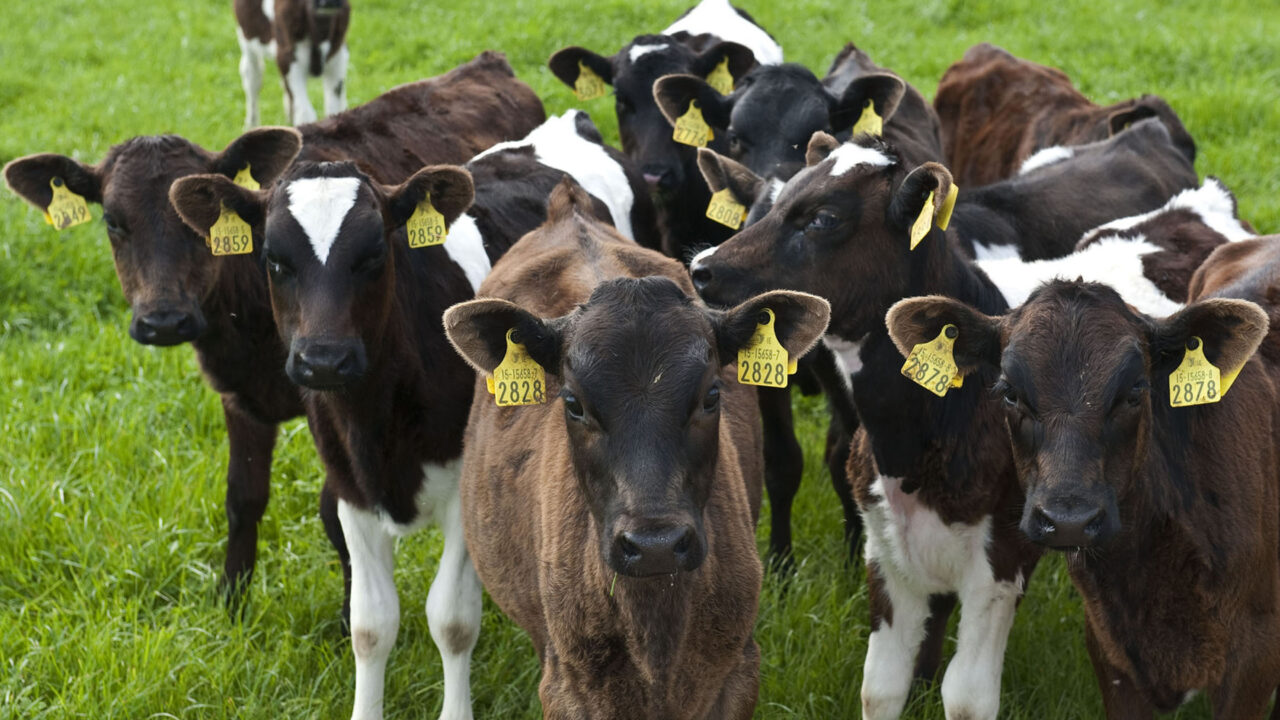For the next few weeks suckler calves will be arriving fast and furious on farms. Supervision and good stockmanship at calving is crucial especially with first-time calvers.
This is according to Anthony O’Connor of Teagasc.
“Through proper supervision, losses at calving can be minimised. In most cases of calving losses the calf is still alive at the start of calving. Do
not interfere with the calving process unless help is needed.
“Every effort is needed to ensure that the new born calf has an increased chance of survival and a future healthy life. Calf mortality should be less than five per cent on suckler farms.
O’Connor outlined key Teagasc advice in the early hours include:
“Assuming a trouble free calving, use a clean disinfected calving box, then some suggested best management practice will include:
Disinfect the navel of the calf after birth with Tincture of Iodine to prevent Navel Ill and Joint Ill. The entire navel cord should be covered with Iodine.
Cleaning and Drying – Encourage the cow to lick the calf dry. This prevents the calf from becoming chilled and helps forge a calf/cow bond. First time calvers need to be watched closely that they are given time to bond with their calf. If the cow fails to lick the calf, give it a brisk rub down with clean hay or straw.
Colostrum – Cow’s Colostrum is an excellent source of antibodies (passive immunity), heat, and energy for the new born calf. Clean and rub down the cow’s teats to ensure they are free of dirt, cuts or abrasions. Encourage the calf to suckle and receive it’s first taste of colostrum. Calves require at least one litre of colostrum per 10 kg bodyweight in the first twelve hours of life (five litres for a 40kg calf).
Ideally, calves should get three litres one to two hours after birth and a further two litres within six hours. Have a few litres of frozen colostrum available for emergencies. This can be stored in two litre plastic milk containers. Defrost and warm the colostrum in a basin of warm water at 40 degrees centigrade.
Overheating will damage the protein content of the colostrum. Never use a microwave to warm colostrum. When the colostrum is lukewarm it can be given to the calf via a small bucket with a plastic teat or by stomach tube. Caution is urged if using a stomach tube, as it may result in calf choking.
BVD Tagging – Take BVD tissue sample as soon as possible after calving, when the calf is dry. Ensure cow is safely secured when tagging the calf. Tissue samples should be kept in cold storage until posting.
Straw – Don’t skimp on straw for a newborn or very young calf. Dry clean straw will provide heat and comfort for the young calf. Replace bedding for cow and calf at regular intervals. After a few days, the calf and cow can be returned to slats and creep area or released outdoors.
Early Days:
According to O’Connor, once a calf survives the first few hours, its chances of a healthy life are greatly enhanced.
“Young calves are totally dependent on their mother’s milk until their rumen develops. Lactating suckler cows need to be in good body condition and get adequate feeding to sustain milk production. Lactating suckler cows that lose excess body condition will suffer depressed milk yield and will be slow returning to heat.
He continued: “Calves should have access to a creep area until turnout. Creep pens need to be well bedded, dry and clean. Allowing pens to become wet and dirty will only increase disease risk. Pens require cleaning every few days. Thoroughly clean, power wash and disinfect pens using a strong disinfectant. This prevents a build-up of harmful micro-organisms such as Cryptosporidium.”
He said if there is a history of scour/disease/infection in the calving area, farmers should consult their vet on what specialised disinfectant to use.
Allow pens to dry and bed with fresh straw. Hydrated Lime, sprinkled on the bedding area before straw is laid, will act as an additional disinfectant, he added.
Calves on grass. Photo O’Gorman Photography.
